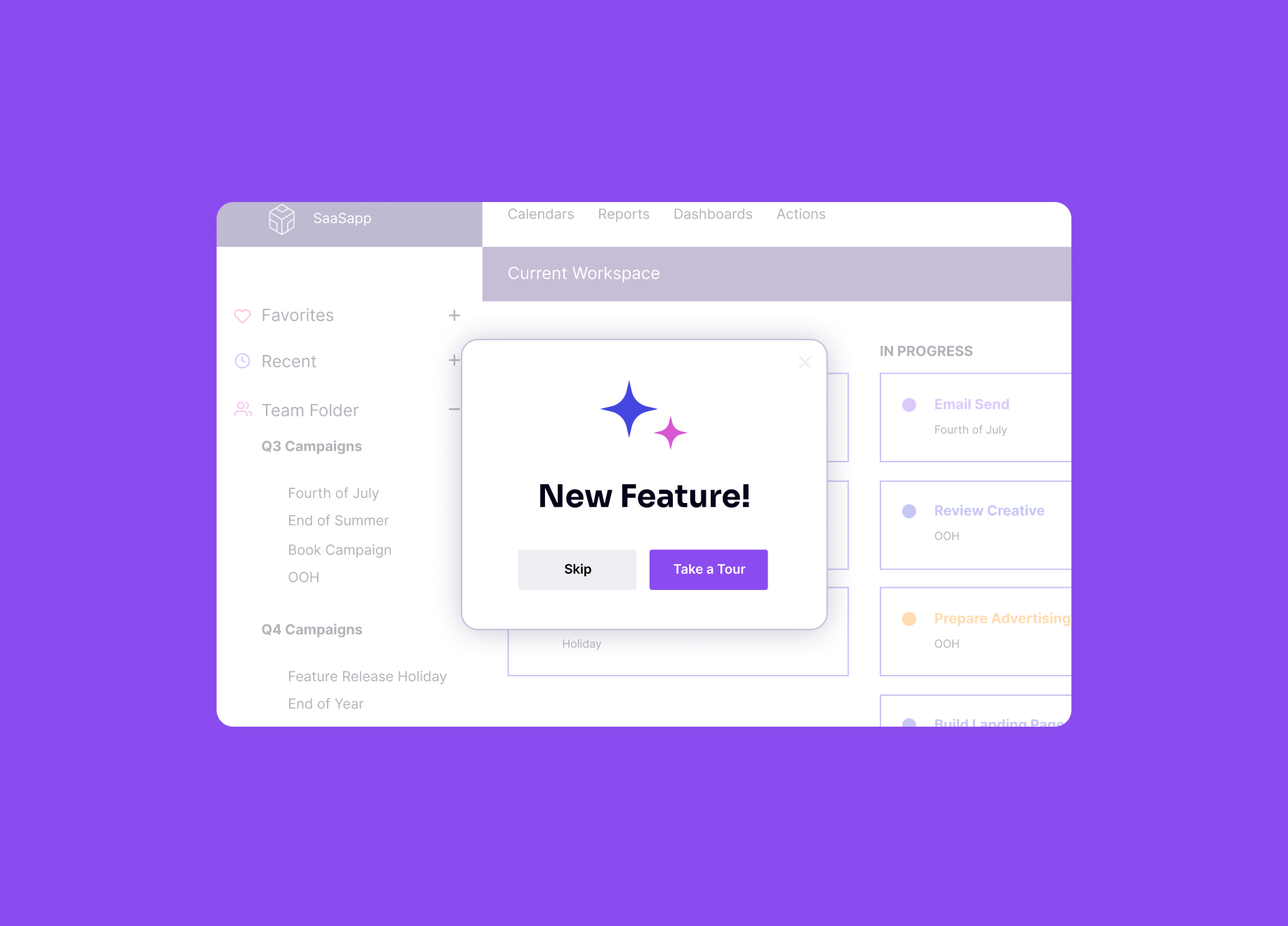Table of Contents
What are homegrown applications?
Homegrown applications are digital products that businesses build in-house through their own development and product teams (rather than purchase from an external or third-party vendor). Homegrown applications can be external-facing (serving customers), internal-facing (serving employees), or a combination of both.
Why do businesses build homegrown applications?
Businesses build homegrown apps for a variety of reasons. Very often, these apps serve a need or needs that commercially available external software products do not fully meet. If a business feels that no product or application in the market can achieve the specific goals it’s targeting, it will often use its own engineering teams and internal product managers to build something that will.
What are the advantages of homegrown applications?
Homegrown applications can deliver significant value for businesses in various ways:
- Tailored solutions: Homegrown applications are built specifically to address the unique needs and requirements of the business. This customization ensures that the software aligns perfectly with the organization’s workflows, processes, and objectives, maximizing efficiency and productivity.
- Competitive advantage: By developing custom applications, businesses can differentiate themselves from competitors. Homegrown applications can incorporate innovative features and functionalities that do not exist elsewhere, thereby setting the organization apart in the market and enhancing its competitive position.
- Cost-effectiveness: While the initial investment in developing a homegrown application may be higher compared to purchasing off-the-shelf software, it can lead to long-term cost savings. Businesses avoid ongoing licensing fees associated with third-party software and have more control over maintenance and updates, reducing total cost of ownership.
- Integration and streamlined operations: Homegrown applications can be seamlessly integrated with existing systems, databases, and technologies within the organization’s infrastructure. This integration streamlines operations, reduces data silos, and improves data accuracy and accessibility across different departments.
- Agility and flexibility: Building custom applications allows businesses to respond quickly to changing market conditions, customer demands, and regulatory requirements. They can iterate and adapt the software more rapidly compared to waiting for updates or new releases from third-party vendors.
- Enhanced data security and compliance: Homegrown applications enable businesses to implement robust security measures tailored to their specific needs. They can ensure compliance with industry regulations and data protection standards, mitigating the risk of data breaches and regulatory penalties.
- Innovation and experimentation: Developing homegrown applications fosters a culture of innovation within an organization. Businesses can experiment with new technologies, features, and business models, driving continuous improvement and staying ahead of market trends by leveraging the apps they build.
- Ownership and control: With homegrown applications, businesses have full ownership and control over the software development process. They can prioritize specific features, make strategic decisions, and adapt the application to evolving business requirements without dependending on external vendors.
- Customer experience and satisfaction: Homegrown applications can be designed with a focus on delivering exceptional user experiences tailored to the specific needs of customers or end-users. This can lead to higher customer satisfaction, retention, and loyalty.
Overall, homegrown applications offer businesses a strategic advantage by providing tailored solutions, driving innovation, and enabling agility and control over their technology stack.
What are some examples of companies with homegrown applications?
Homegrown applications vary as widely as the businesses that build them and the purposes they build them for.
For example: JLL, the storied commercial real estate firm, has built homegrown applications for its brokers to use. Blackbird is an internally built geospatial visualization platform designed to demonstrate market knowledge to clients in a visually compelling way. MarketSphere is a homegrown business intelligence platform that tracks and compiles commercial real estate data and delivers reporting and analytics on it to brokers, researchers, and clients. Walmart, the leading U.S.-based retail chain, developed a custom inventory management system to optimize stocking levels, reduce waste, and improve supply chain efficiency across its stores.
What are some examples of how Pendo can improve the user experience on homegrown applications?
Pendo’s all-in-one product experience platform helps companies refine and improve their homegrown applications in myriad ways, including:
- Powerful analytics: Best-in-class product analytics lets internal product managers and IT teams understand user behavior and frustration points via unmatched quantitative insights. With Pendo, they have a clear view into which features are getting used, which aren’t, and where users may be getting stuck.
- Tailored in-app support: Customized in-app guidance lets internal PMs and others who manage homegrown apps make sure they’re getting the right support to the right user at the right time. They can segment users by metadata and behavior to ensure that the support they’re giving is timely, contextual, and relevant.
- Feedback collection and management: Pendo makes it easy for homegrown application teams to seamlessly deploy feedback queries in the form of in-app polls and surveys. From there, they can actively manage a single source of truth for user feedback, prioritizing asks, improvements, and their application roadmap accordingly.
What are the challenges associated with developing homegrown applications?
While homegrown applications offer numerous benefits, they also come with several challenges that organizations must navigate. Here are some common challenges associated with homegrown applications:
- Resource intensiveness: Developing and maintaining homegrown applications requires significant resources, including skilled developers, project managers, testers, and infrastructure. Allocating sufficient resources and budget for ongoing development, support, and updates can be a challenge for organizations, particularly smaller ones with limited resources.
- Time-to-market constraints: Building custom software from scratch often takes longer than implementing off-the-shelf solutions. Balancing the need for customization with the pressure to deliver solutions quickly can be challenging, especially in fast-paced industries where time-to-market is critical.
- Complexity and scalability: As organizations grow and evolve, homegrown applications may struggle to scale effectively to accommodate increased user loads, data volumes, and feature requirements and usage. Managing the complexity of scaling custom-built solutions while maintaining performance and reliability can be challenging.
- Maintenance burden: Once deployed, homegrown applications require ongoing maintenance, support, and updates to address bugs, security vulnerabilities, and compatibility issues. Managing the maintenance burden while balancing other development priorities can strain resources and impact productivity.
- Technical debt: Rushing to meet deadlines or making compromises during development can result in technical debt—suboptimal code, design decisions, or architecture choices that accumulate over time and hinder future development efforts. Addressing technical debt requires dedicated time and resources to refactor, optimize, and improve the codebase.
- Risk of obsolescence: Technology evolves rapidly, and homegrown applications may become outdated or obsolete if not regularly updated and modernized. Keeping pace with advancements in programming languages, frameworks, and infrastructure—not to mention user preferences and needs—requires proactive planning and investment in ongoing education and skill development.
- Integration challenges: Integrating homegrown applications with existing systems, databases, and third-party services can be complex and time-consuming. Ensuring seamless data flow, compatibility, and interoperability between disparate systems requires careful planning, testing, and coordination.
- User adoption and satisfaction: User adoption of homegrown applications can be a challenge, particularly if the software lacks intuitive design, usability, or functionality. Ensuring that the application meets the needs and expectations of end-users through user-centric design, training, and support is essential for driving adoption and satisfaction.
- Vendor lock-in: While homegrown applications provide organizations with greater control and ownership, they also introduce the risk of vendor lock-in. Dependency on internal development teams, proprietary technologies, or legacy code can limit flexibility and hinder future innovation or migration efforts.
- Regulatory compliance and security: Homegrown applications must comply with relevant regulations, standards, and security best practices to protect sensitive data and mitigate legal and financial risks. Ensuring compliance with data privacy laws, industry regulations, and cybersecurity standards requires ongoing vigilance, investment, and expertise.
Addressing these challenges requires careful planning, proactive management, and ongoing investment in people, processes, and technology to ensure the success and sustainability of homegrown applications within organizations.
What steps should internal product managers and IT teams take to ensure homegrown applications’ success?
Ensuring the success of homegrown application projects requires careful planning, effective execution, and ongoing evaluation. Here are some key strategies organizations can employ to maximize the success of their custom software development initiatives:
- Clearly define objectives and requirements: Start by clearly defining the objectives and requirements of the homegrown application project. Engage stakeholders from different departments and levels of the organization to gather input and ensure alignment with business goals.
- Involve end-users from the beginning: Engage end-users throughout the development process to gather feedback, validate assumptions, and prioritize features. Incorporating user feedback early and often helps ensure that the final product meets the needs and expectations of its intended users.
- Adopt agile methodologies: Embrace agile methodologies such as Scrum or Kanban to iteratively develop and refine the homegrown application. Break down the project into smaller, manageable increments or sprints, allowing for flexibility, adaptability, and incremental delivery of value.
- Establish clear communication channels: Maintain open and transparent communication channels among team members, stakeholders, and project sponsors. Regularly communicate project status updates, milestones, risks, and dependencies to ensure everyone is informed and aligned.
- Allocate sufficient resources and expertise: Ensure that the project is adequately resourced with skilled developers, project managers, testers, and other necessary personnel. Provide training and professional development opportunities to build and maintain the necessary expertise within the team.
- Manage scope and prioritize features: Define a minimum viable product (MVP) and prioritize features based on business value, user needs, and technical feasibility. Resist the temptation to over-engineer or include unnecessary features that could prolong the development timeline or increase project complexity.
- Implement robust quality assurance processes: Establish comprehensive testing and quality assurance processes to identify and address issues early in the development lifecycle. Conduct thorough testing of both functionality and performance, including unit tests, integration tests, and user acceptance testing (UAT).
- Foster a culture of collaboration and accountability: Encourage collaboration, knowledge sharing, and accountability among team members. Foster a culture of ownership and empowerment, where individuals take pride in their work and feel empowered to contribute to the project’s success.
- Manage risks proactively: Identify potential risks and uncertainties early in the project and develop mitigation strategies to address them. Regularly reassess and update the risk register throughout the project lifecycle to stay ahead of potential challenges.
- Seek continuous improvement: Embrace a mindset of continuous improvement and learning. Conduct post-mortem reviews and retrospectives after project milestones to reflect on lessons learned, celebrate successes, and identify areas for improvement in future projects. Leverage a product experience platform to combine quantitative insights with qualitative feedback to drive the right improvements on the right timeline.
By implementing these strategies and best practices, organizations can increase the likelihood of success for their homegrown application projects—delivering value to stakeholders and driving business growth and innovation.
How should homegrown applications approach security questions?
- Data protection: Homegrown applications must implement robust security measures to protect sensitive data from unauthorized access, manipulation, or disclosure.
- Vulnerability management: Developers need to stay vigilant against emerging threats and vulnerabilities, regularly patching and updating the application to mitigate security risks.
- Compliance requirements: Homegrown applications must comply with relevant regulations and standards governing data privacy, such as GDPR or HIPAA, to avoid legal and financial consequences.
- Security testing: Conduct thorough security testing, including penetration testing and code reviews, to identify and remediate vulnerabilities before deployment.
What role do homegrown applications play in digital transformation initiatives?
When built and managed correctly, homegrown applications can move the needle on your digital transformation initiatives. Here are three ways in which they can do so:
- Enabler of innovation: Homegrown applications empower organizations to innovate and adapt to changing market conditions by rapidly developing and deploying new digital solutions.
- Agility and scalability: By building custom applications, organizations can achieve greater agility and scalability, allowing them to respond quickly to evolving business needs and scale operations efficiently.
- Culture of ownership: The development and deployment of homegrown applications foster a culture of ownership and accountability among employees, driving engagement and alignment with strategic objectives.
How do organizations decide whether to build or buy software solutions?
- Cost-benefit analysis: Organizations weigh the costs and benefits of building a custom solution versus purchasing an off-the-shelf software package, considering factors such as development costs, licensing fees, and long-term maintenance.
- Strategic alignment: Organizations assess whether existing off-the-shelf solutions meet their specific requirements or if custom development is necessary to achieve strategic objectives and maintain competitive advantage.
- Resource availability: Organizations evaluate their internal capabilities and resources—including technical expertise, budget, and timeline—to determine whether building a homegrown application is feasible and sustainable.
- Risk tolerance: Organizations consider their risk tolerance and the potential consequences of project failure or implementation delays when deciding whether to build or buy software solutions.
How can teams ensure their homegrown apps are scalable?
- Architectural design: Scalable homegrown applications are built with flexible, modular architectures that can accommodate increasing user loads and data volumes without significant performance degradation.
- Resource provisioning: Organizations need to anticipate future growth and provision adequate resources, such as computing power, storage, and network bandwidth, to support the scalability of the application.
- Horizontal and vertical scaling: Homegrown applications should support both horizontal scaling (adding more instances or nodes) and vertical scaling (upgrading hardware resources) to handle increased demand effectively.
How can organizations optimize the usability of homegrown applications for diverse user groups?
- User-centered design: Incorporate user-centered design principles and methodologies, such as persona development and usability testing, to understand the needs and preferences of different user groups.
- Accessibility compliance: Ensure that homegrown applications comply with accessibility standards to accommodate users with disabilities and provide a seamless user experience for all individuals.
- Training and support: Offer comprehensive training and support resources to help users of varying skill levels effectively navigate and utilize the features of the homegrown application. Rather than build your training motions in one-off sessions for disparate users, leverage a product-experience solution to provide always-on, customized support.
- Iterative improvement: Continuously gather feedback from users and iterate on the design and functionality of the homegrown application to address usability issues and enhance user satisfaction.
What’s the best way to effectively maintain and improve homegrown applications?
Maintaining homegrown applications is crucial to ensure their continued effectiveness, security, and alignment with evolving business needs. Here’s a guide on how businesses can effectively maintain their custom-built software solutions:
- Establish a maintenance plan: Develop a comprehensive maintenance plan that outlines responsibilities, schedules, and procedures for ongoing support and updates. Assign dedicated resources, such as developers, testers, and system administrators, to handle maintenance tasks.
- Regular monitoring and performance tuning: Implement monitoring tools and processes to track the performance, availability, and usage of the homegrown application. Monitor key performance indicators (KPIs) and metrics to identify bottlenecks, inefficiencies, or potential issues that require optimization or tuning.
- Software updates and patch management: Stay proactive in applying software updates, security patches, and bug fixes to the homegrown application. Regularly review release notes, security advisories, and vendor announcements to identify and prioritize updates based on criticality and impact.
- Version control and change management: Utilize version control systems and change management processes to track modifications, manage codebase versions, and coordinate development activities. Enforce review and testing procedures to maintain app quality and integrity.
- Documentation and knowledge management: Maintain up-to-date documentation, including system architecture, design specifications, user manuals, and troubleshooting guides. Document known issues, resolutions, and lessons learned to facilitate knowledge sharing and troubleshooting among team members. Consider using a product-experience platform’s always-on resource center as a single source of truth for knowledge management.
- User support and training: Provide ongoing user support and training to ensure that users understand how to effectively utilize the features and functionalities of the homegrown application. Offer training sessions, tutorials, and helpdesk support to address user questions, feedback, and issues.
- Security and compliance audits: Conduct regular security audits, vulnerability assessments, and compliance checks to identify and address potential security risks, regulatory gaps, or non-compliance issues. Implement security best practices, access controls, and encryption mechanisms to safeguard sensitive data and protect against cyber threats.
- Backup and disaster recovery planning: Establish robust backup and disaster recovery plans to mitigate the risk of data loss, system downtime, or disruptions to business operations. Regularly back up critical data, configurations, and application components, and test recovery procedures to ensure their effectiveness.
- Continuous improvement and feedback: Foster a culture of continuous improvement by soliciting feedback from users, stakeholders, and team members. Regularly review and prioritize enhancement requests, feature enhancements, and usability improvements based on user feedback and business priorities. It’s best to collect feedback using in-app polls and surveys via a product experience platform, so that employees are making their voices heard in real time, as they’re using the product.
Where can I learn more about homegrown application best practices?
Pendo has published resources on the KPIs for IT teams and internal product managers to track, as well as case studies of customers successfully optimizing homegrown applications.



